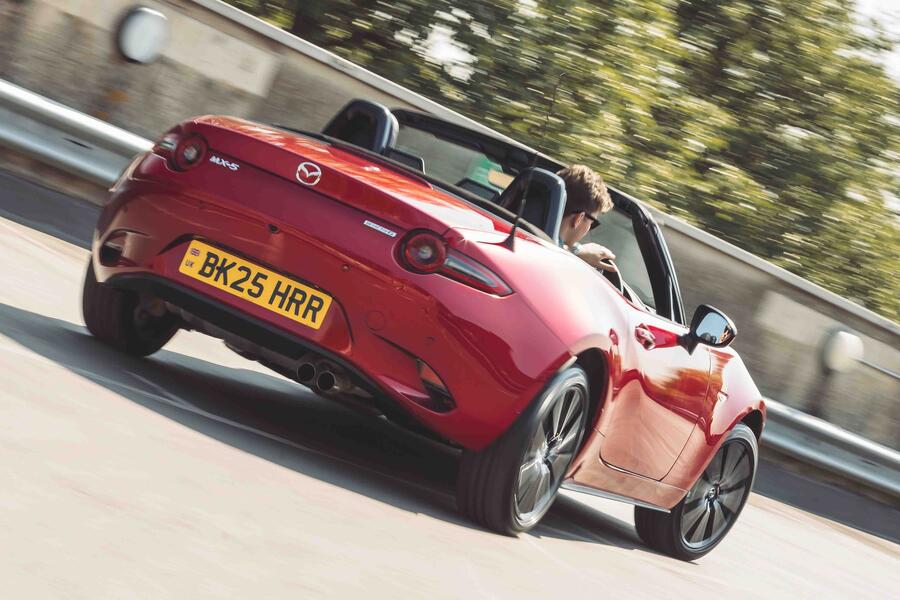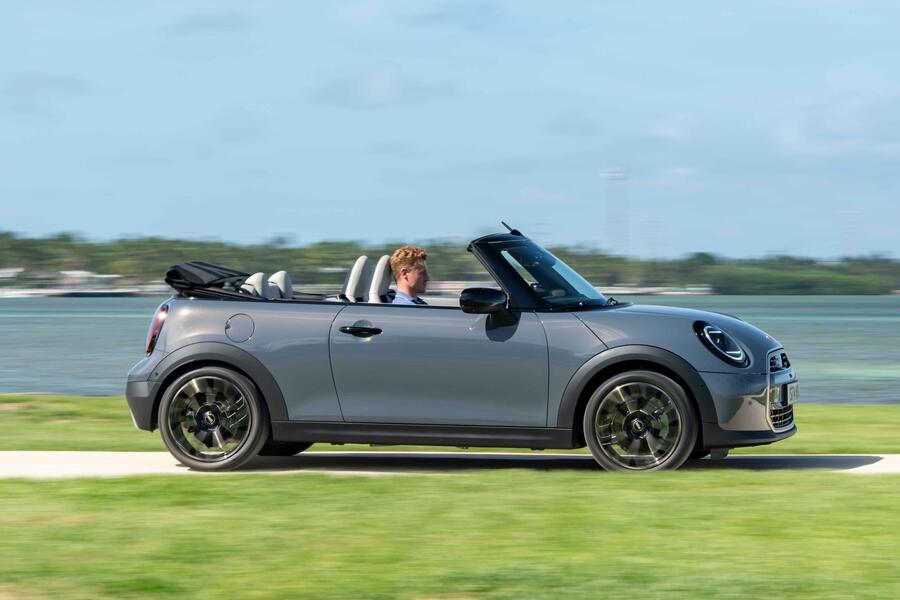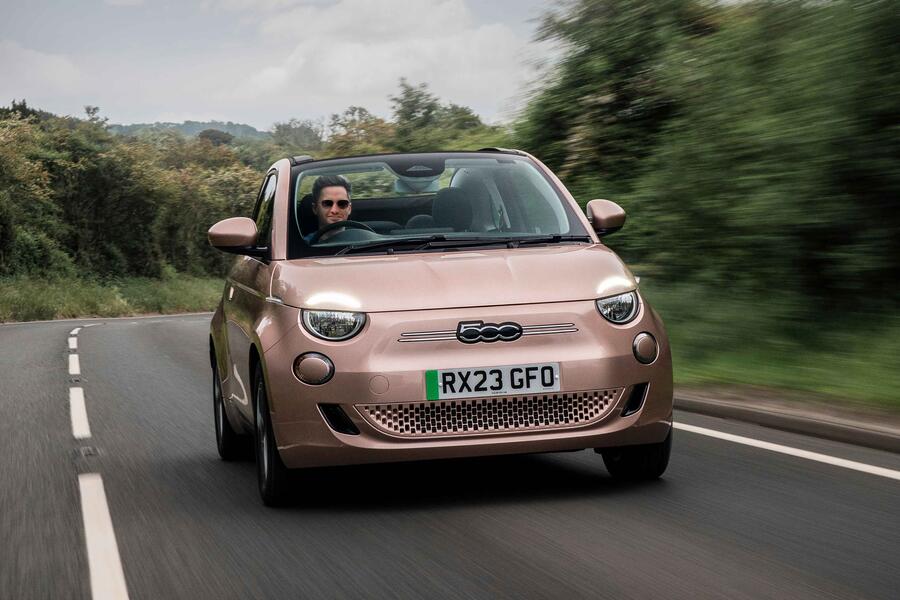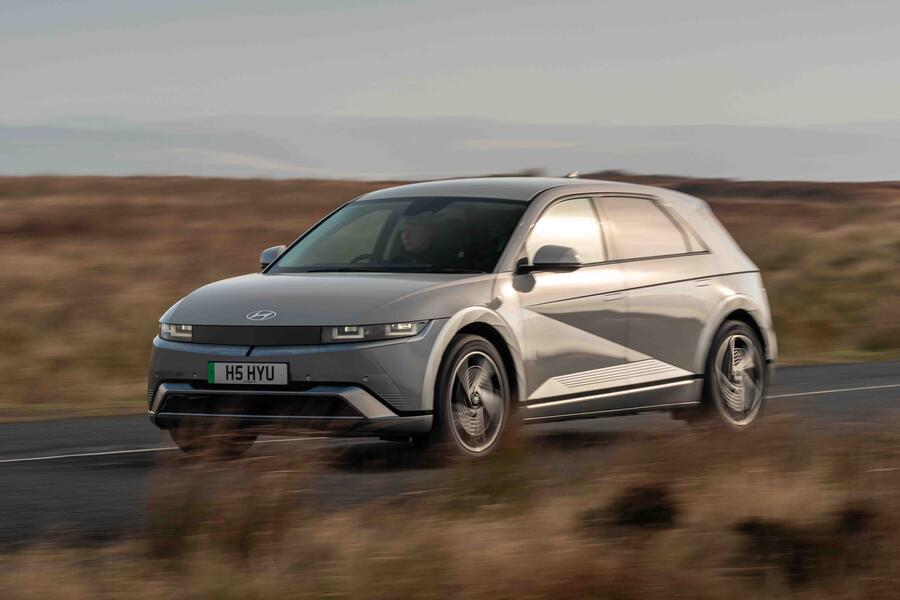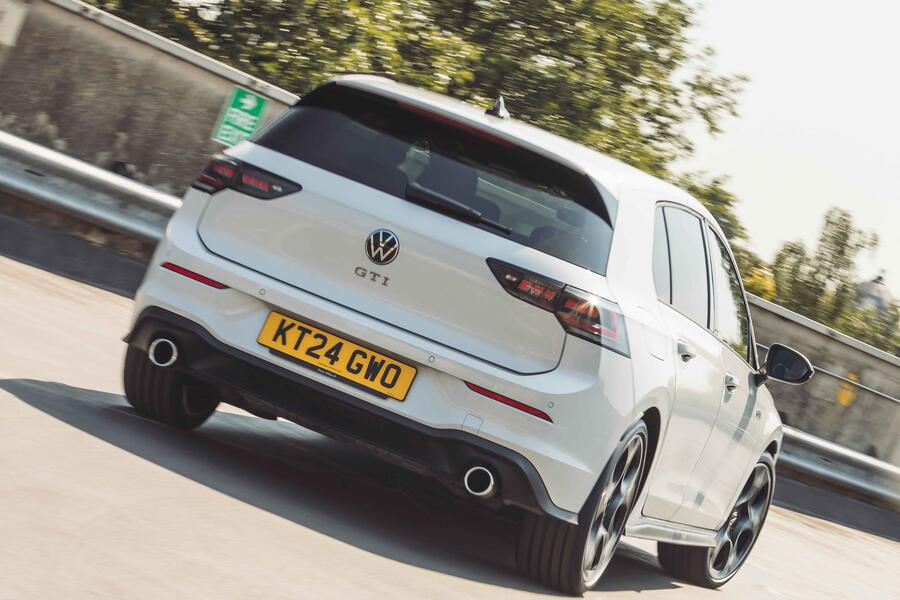Silicone wiper blades what to know before you buy
Ford Maverick Then and Now How the Classic Compares to the Modern Truck

PCP Deals Uncovered How to Drive Your Dream Car for £100 a Week

You might be surprised about what £400 per month can net youA PCP can be the best way to get a new car on the drive, but what's available for a budget of just £100 per week?
More than 30 years since Ford launched the UK's first personal contract purchase scheme, PCPs are today the leading form of new car motor finance among private buyers.
Affordable (you fund only a portion of the car's list price), flexible (at the end of the repayment term, you can part-exchange the car for a new one, pay the balance to buy the car or return it) and widely available (pretty much every dealer offers them), a PCP kicks all other forms of personal new-car finance into touch.
Factor in sweeteners such as low-rate finance and manufacturer deposit contributions (dc) and it's a no contest.
Of course, a PCP comes with strings, such as condition and mileage penalties, but unless you're handing the car back to the dealer at the end of the term and walking away, they're rarely imposed.
Instead, most people either part-exchange their car or sell it to a trader who pays off the finance as well as returning them some extra cash - what the trade calls equity.
Of course, wise heads would say the smarter thing still is to buy nearly new and avoid expensive new car depreciation. Perhaps, except that, thanks to the manufacturer finance offers some are bundled with, a new car on a PCP may actually be better value - and almost certainly so if you can chisel a discount or a free servicing package.
In any case, the latest model-year always brings useful improvements or upgrades that make a car more satisfying to run.
The clever thing about a PCP is how good it is at reducing any conversation about car buying to one thing: the monthly repayment. We've focused on what £400 per month (or £100 per week, if you like) - the value of the average repayment - gets you. All the deals are based on driving 10,000 miles per year.
Compared with a similar exercise that we carried out almost 10 years ago, what's striking is how much more deposit is required to arrive at the same monthly repayment of £400. Blame the increase in car prices for that, plus expensive variants including hybrids and electric cars.
Is handing over a big deposit to reduce the monthly bill a sensible idea Putting a large amount of hard cash into a car that will only depreciate isn't really a smart move, especially when it's one you will never own without paying even more.
Worse still, you may have nothing left for your next deposit, which, when it comes to PCPs, is the name of the game.
Convertibles
Mazda MX-5
Reasonably affordable deposits, one of them boosted by a deposit contribution, plus low-rate finance are a feature of this trio of soft-tops. The downside is that all the deals are four-year terms, which means you're in them for the long haul. Pray for good weather...
In recent years, the Mazda MX-5's price has gone through its own fabric roof. We've plumped for the zippier 2.0-litre version in mid-spec Exclusive-Line trim, which has perforated leather seats and dynamic stability control with a track mode that dials the DSC back.
Even with a deposit of £4500, it's still £402 per month over four years, but at least the APR is low.
Mazda MX-5 Exclusive: Deposit £4500. APR 2.9%. Monthly payment 46 x £402
Mini Cooper S
Hear that? It's the Mini sales exec crowing about the lower £2500 deposit on the Cooper S Convertible in entry-level Classic trim. If you want to spend less, the detuned 2.0-litre that powers the Cooper C produces 161bhp, which isn't far off the output of the previous S model.
Whichever version you choose, both are well equipped. The hood is electrically powered, too, and can be partially raised at the back to increase boot space if you need it.
Mini Cooper S Classic Convertible: Deposit £2500. APR 4.9%. Monthly payment 47 x £399
Fiat 500e
The Fiat 500e is under pressure from its new rivals in the small EV sector, so it's not surprising that it's alone here in being offered with a deposit contribution, albeit worth a modest £250, plus 0% finance.
Compared with the 24kWh battery you get in lesser hard-top versions, the 500e Cabrio has a 42kWh battery that can be rapid-charged to 80% in 30 minutes. It has an official range of 199 miles, although during its road test, Autocar squeezed just 142 miles out of it. Thanks to its 117bhp electric motor, the Fiat can hit 62mph from rest in 8.0sec.
Fiat 500 Cabrio: Deposit £2000 + £250dc. APR 0%. Monthly payment 47 x £400
Crossovers & SUVs
Hyundai Ioniq 5
The Hyundai Ioniq 5 is a strong contender in the family EV class. We like its different looks, SUV practicality, configurable powertrain and rapid-charging ability.
To hit our notional £400 monthly budget, the Ioniq 5 Advance 63kWh requires a meaty £7700 customer deposit, equivalent to 19% of the car's total cash price, but Hyundai chips in an additional £2000 and asks zilch for the loan.
The finance term is 36 months. Or you could consider its sister car, the Kia EV6 63kWh Air. The same £7700 deposit but this time a contribution from Kia of only £1000 plus a 3.9% APR brings the monthly payment to £409.
Hyundai Ioniq 5 63kWh Advance: Deposit £7700 + £2000dc. APR 0%. Monthly payment 36 x £397
Lexus NX
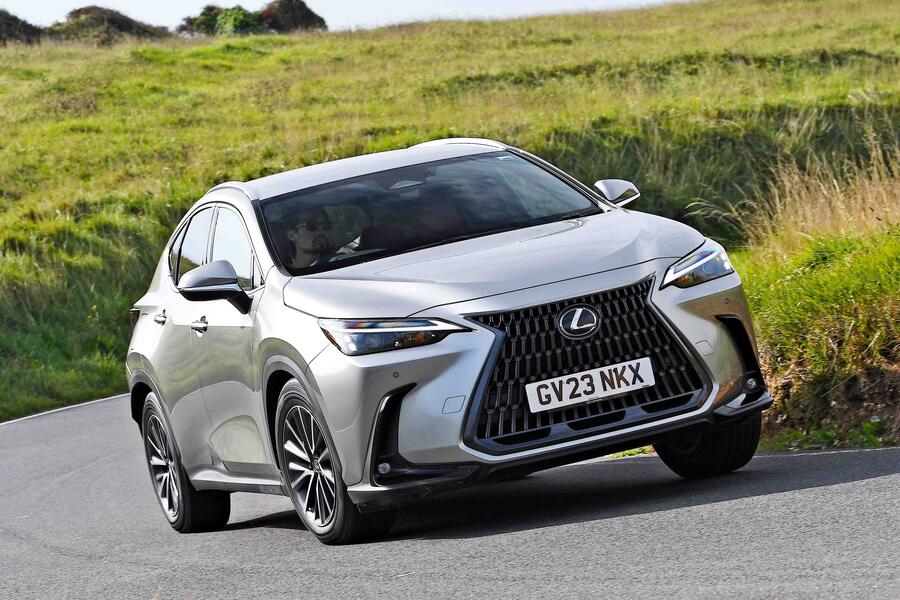
To have a Lexus NX 350h Urban on your driveway for £400 per month requires a larger deposit a not inconsiderable £12,560, equivalent, to 28% of the car's total cash price. By the end of the finance term, the balance to pay is equivalent to 45% of the car's new price.
That balance to pay figure should always be a realistic reflection of the car's future worth; inflating it unrealistically brings down the monthly payments but at the expense of future equity.
Lexus NX 350H Urban: Deposit £12,560. APR 4.9%. Monthly payment 40 x £400
Ford Puma

As the pioneer of the PCP in the UK, it's fitting there should be a Ford in this selection. Being a relatively cheap car, the mild-hybrid Ford Puma ST-Line requires a modest £4000 deposit to hit our £400 per month target.
Ford thinks the car will have lost 60% of its value over the three-year term; in the used market, this rate of depreciation is one of the reasons why we named the model Britain's best-value used car.
Ford Puma 1.0 ST-Line: Deposit £4000. APR 1.9%. Monthly payment 36 x £401
Superminis
Renault 5
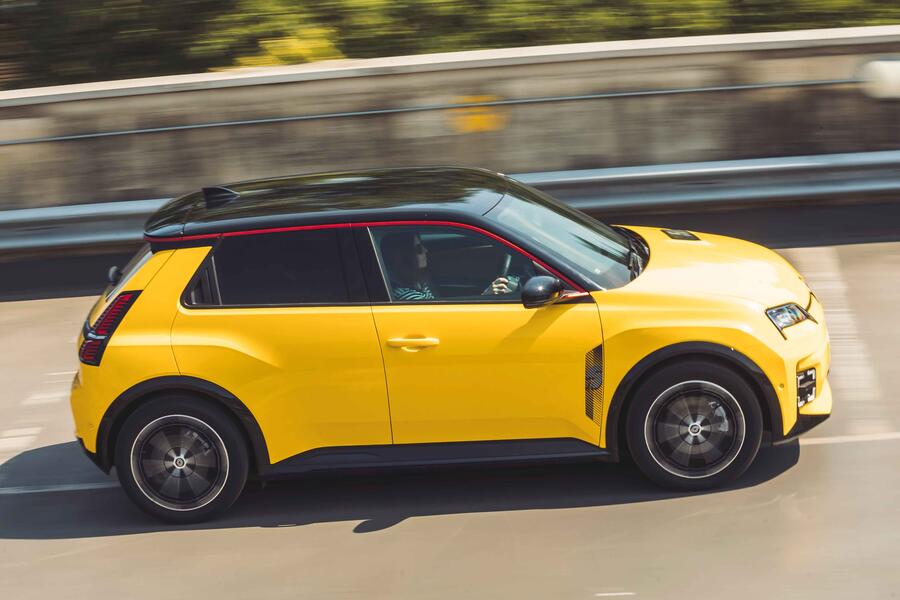
The Renault 5 is still basking in plaudits, so a deposit contribution of just £500 comes as little surprise. Add the customer deposit of £2676 and this stylish EV comes in at £401 per month over four years. It's a great-looking small car that's also roomy.
Our choice has the 148bhp motor that can propel it from 0-62mph in 7.9sec, and it has the larger 52kWh Comfort Range battery with an official range of 252 miles.
Renault 5 E-Tech Iconic: Deposit £2676 + £500dc. APR 5.9%. Monthly payment 47 x £401
Peugeot 208
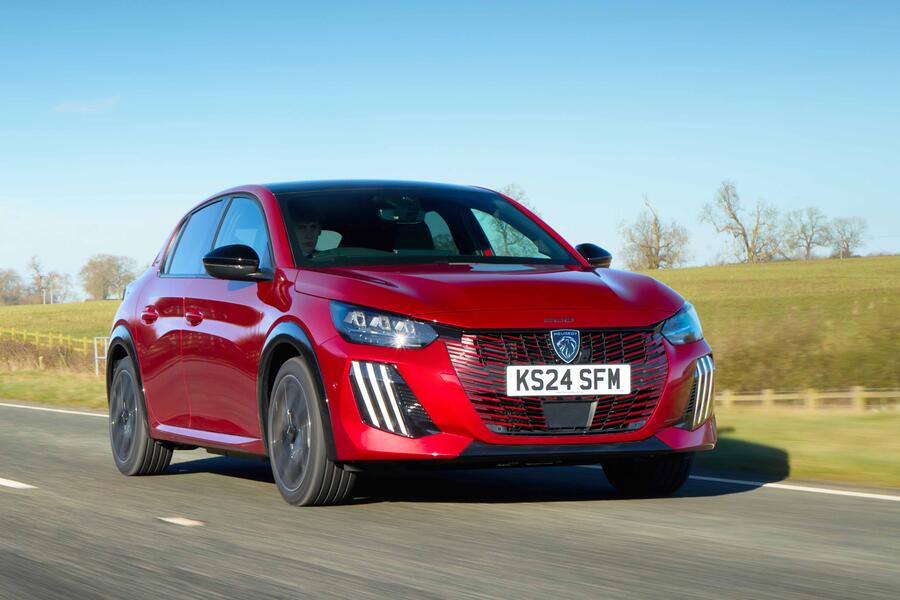
If you're cash-poor but can afford £400 in monthly payments, the Peugeot 208 GT Hybrid 145 is worth a look. Peugeot is shovelling £4400 into the deal as a deposit contribution, meaning you have only to find £750 to get behind the wheel of one for the next four years. And with a future value of £11,000, it could make an attractive buy for a family member when the finance term is up.
The current 208 features 3D digital instruments and a widescreen sat-nav; our choice is quick and capable of electric-only running for short distances.
Peugeot 208 Hybrid 145 GT: Deposit £750 + £4400dc. APR 6.9% APR. Monthly payment 47 x £400
Audi A1

Prefer something more premium? Boosted by a £900 contribution from Audi, for the same £750 deposit and four-year term you could have an A1 Sportback 30 TFSI S Tronic. The Audi A1 is the premium supermini choice, with only the Volkswagen Polo to worry it.
Incidentally, with a deposit of £1000 plus a contribution from VW of £1900, a Polo 1.0 TSI 115PS R-Line DSG also comes in at £400 a month over 48 months. It's better value, but the Audi feels that bit more special thanks to its more impressive build quality and a quiet, well-controlled ride.
Audi A1 30 TFSI Sport S Tronic: Deposit £750 + £900dc. APR 8.95%. Monthly payment 47 x £397
Coupés
Mercedes CLA
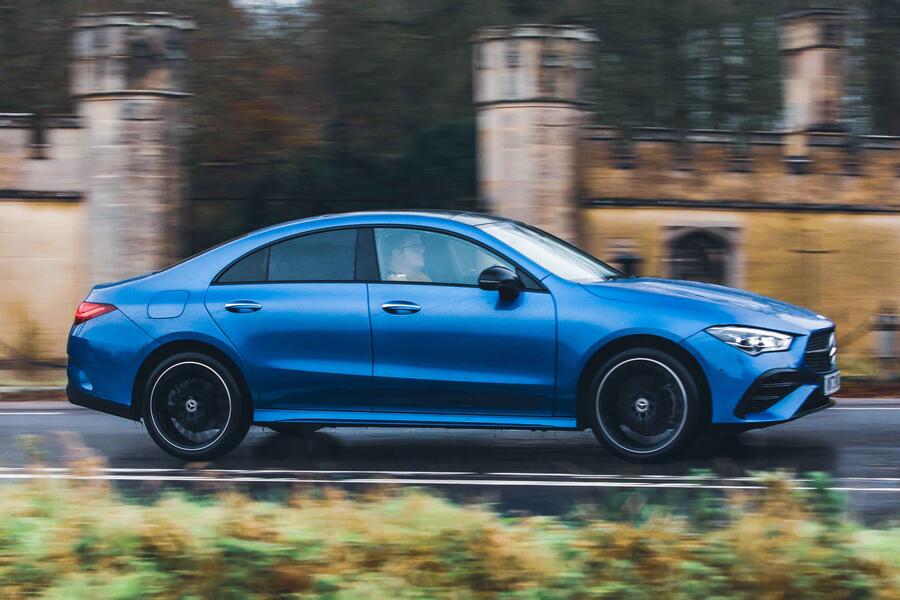
Without even asking, we were given a £3500 discount on a Mercedes-Benz CLA 250e AMG Line Executive by our local agent. With a £7750 deposit, it helped bring the monthly payments to £402 over four years. It's powered by a 1.3-litre turbo petrol engine but paired with an electric motor, so there's a combined 215bhp on tap.
There's plenty of space in the front cabin, but the rear is suitable only for nippers.
Mercedes-Benz CLA 250:. Deposit £7750. APR 2.9%. Monthly payment 47 x £402
BMW 4 Series

BMW may be offering a discount of £893 (what it calls a 'sales offer'), but to get to £400 per month over four years, customers have to stump up a £14,193 deposit. The 420i Coupé is a nicely rounded machine: sporty, roomy and surprisingly practical. If you have any money left, add the optional adaptive suspension.
BMW 4 Series 420i M Sport Coupe: Deposit: £14,193. APR 5.9%. Monthly payment 47 x £400
Skoda Enyaq
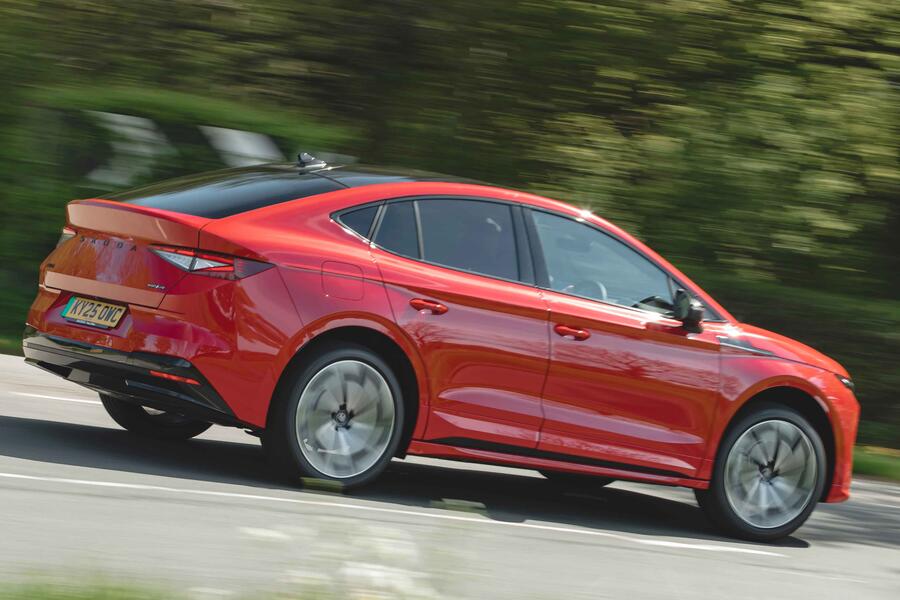
The BMW X6 of 2008 was the first coupé-SUV. It raised eyebrows at the time, but forward to today and the concept thrives in the form of electric coupé-crossovers whose numbers run well into double figures. Among them is the Skoda Enyaq Coupé.
Our choice, the 85 Edition, is more expensive than the regular Enyaq but better equipped and, despite its sloping roof, just as roomy. Thanks to Skoda's 0% finance offer and your meaty £11,000 deposit, you can have one for £399 a month over three years. An alternative deal has Skoda charging 6.9% APR but contributing an additional £2750. We were tempted until we realised that to hit our £400 target would require a larger deposit of £11,500 and a payment term of four years.
If you were considering buying it at the end of the term, the good news is that the optional final payment would be £2237 less (£19,012 versus £21,249).
Skoda Enyaq 85 Coupe: Deposit £11,000. APR 0%. Monthly payment 35 x £399
Hot hatches
Volkswagen Golf GTI
In PCP terms, this category is notable for the generous deposit contributions that are available. For example, VW is contributing £3000 to its deal on the Volkswagen Golf GTI.
Add your own £8307 deposit and the archetypal hot hatchback can be yours for £400 per month over four years. The APR is 7.9%. It all adds up to a pile of debt, but, given the model's popularity on the used car market, you should end the term with some decent equity.
This current Mk8.5 GTI isn't quite as rounded as the best generations that came before it, among them its immediate predecessor, but it's still terrific fun and the most complete hot hatch you can buy.
Volkswagen Golf GTI: Deposit £8307 + £3000dc. APR 7.9%. Monthly payment 47 x £400
Honda Civic Type R
Honda is offering a £2500 deposit contribution on the Honda Civic Type R, and the gesture helps take the sting out of the extra £15,000 deposit you will have to find to just scrape under our £400 per month target figure.
Blame the model's £51,905 on-the-road price, but then focus on what the Type R gives back: namely, the most involving hot hatch experience this side of a Toyota GR Yaris, which is smaller and less practical. As a side note, the dealer who quoted us also included a five-year service plan worth £800.
Honda Civic Type R: Deposit £15,000 + £2500dc. APR 6.9%. Monthly payment 37 x £390
Cupra Born VZ
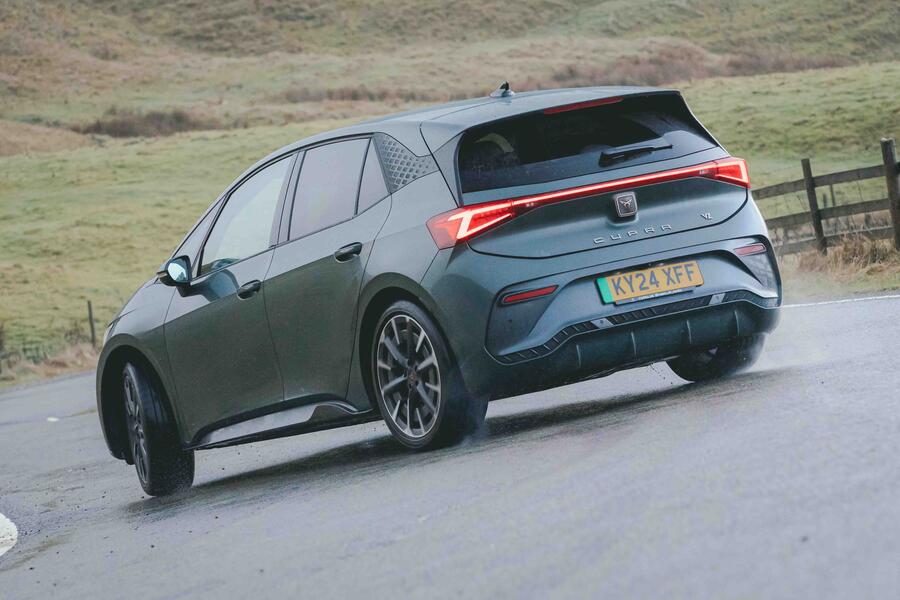
If the Civic Type R looks expensive, then what of the £44,820 Cupra Born VZ, an EV with significantly fewer of the traditional hot hatch ingredients? In fact, the 'veloz' version of the Born is as hot a hatch as any - and that's official, with the model ranking just one place behind the Mercedes-AMG A45 in an Autocar round-up of the best of the breed.
Equally satisfying is that Cupra will chip in a PCP deposit contribution worth no less than £7000. Not only that, but the APR is also a reasonable 4.9%. It's how, with a customer deposit of £8000, it's possible to have one for £401 per month over the next four years.
Cupra Born VZ: Deposit £8000 + £7000dc. APR 4.9%. Monthly payment 35 x £401
Prices correct as of 13th August 2025
Dealer Fees Uncovered What Car Buyers Need to Know Before Signing

BMW 1 Series Review Entry Level Hatch Impresses with Performance but Divides on Price...
 The entry-level version of the sporting hatch divided opinion while it was here
The entry-level version of the sporting hatch divided opinion while it was here
I was really taken aback by the discovery that my new BMW 120 incurs the UK government’s ‘luxury car tax’.
BMW is undeniably a premium brand, of course, and it’s well known that the threshold for the VED supplement is some £13k lower than it would be if Keir and co reasonably accounted for inflation, but still, this is the cheapest model in BMW’s cheapest series. I’ve always considered the ‘1er’ hatchback a fairly affordable luxury, but evidently no more.
Two things are exacerbating matters. First, this series is much slimmer than it once was: as the ‘F40’ made way for the ‘F70’ last year, it took both diesel engines and manual gearboxes with it (at least in the UK), instantly raising the entry price by some £2000; and going back several more years, we lost the 114i and 116i models.
Second, my car is not only in upper-level M Sport trim, some £2000 higher than basic Sport grade, but also has – get ready for it – fitted options totalling £10,415.

The mad thing is that none of them seem superfluous or even particularly extravagant for a car of this kind. It’s not the price that seems to bother most people about the F70, however. Rather, it’s the exterior styling. “It looks like a bloody Kia,” I’ve heard more than one person scoff. Okay, and…?
Most modern Kias look great to my eyes – certainly better than most recent BMWs. And perhaps that was inevitable with the 1 Series’ switch from rear-wheel drive to front-wheel drive back in 2019 (I’m still not over the revelation that the vast majority of BMW 1 Series owners surveyed by BMW didn’t even know why their cars looked and handled the way they did).
And even if it doesn’t have that cab-rearward, long-snouted uniqueness of the old RWD cars, I think we can all agree that the F70 looks much smarter than the dumpy, snorty F40. I imagine my car is representative of what you will typically see of the F70 on the road, considering that there’s only the choice of 120, 123 xDrive and hot M135 xDrive variants now, and British car buyers apparently have an incurable addiction to sporty-looking, big-alloyed specifications and like their transport to reflect their gloomy surroundings.
Yes, there are no fewer than four shades of grey on offer. Hat tip to anyone brave enough to order the purple. The F70 being more of a heavily updated F40 than an all-new car, my 120’s engine is the familiar ‘B38’ turbocharged three-cylinder petrol unit, albeit now with a 48V mild-hybrid system, connected to a seven-speed dual-clutch automatic gearbox with paddle shifters.
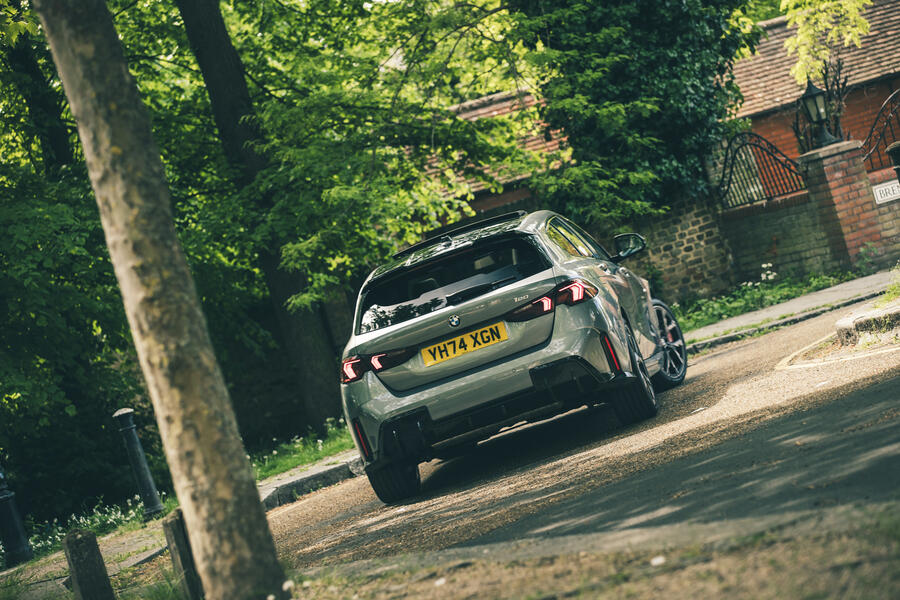
MHEV technology promises to simultaneously improve performance and economy, and indeed the car serves up a healthy 154bhp and an impressive 53.0mpg officially, up from 134bhp and 47.9mpg in the equivalent old 118i.
It sure feels a lot punchier than I had expected upon seeing a low cylinder count. Moreover, BMW claims that “the agility, steering precision and cornering dynamics of the new 1 Series benefit from the increased rigidity of the body structure and the chassis connection”, plus my 120 has been further enhanced by the M Sport Package Pro, including M adaptive suspension (the ride seems very firm even in default mode, but apparently this actually “further increases the vehicle’s dynamic potential without compromising comfort”) and M Sport brakes (red calipers mean you can’t miss ’em).
The car’s interior has also exceeded my expectations, despite that startling £43k price as tested. Thanks to the Technology Plus Pack, BMW’s dashboard-topping Curved Display, which combines the digital instrument display with the infotainment touchscreen, has grown slightly larger and is packed with every gizmo I could imagine.
The cream-coloured upholstery looks fabulous (Veganza faux leather is mandatory but also comes in brown, red and black or in combination with Alcantara).

And although many will see them as tacky, I’m a fan of the M Sport tricolour stitching and ambient lighting panels on the dashboard. (I might add that the appropriate sections flash red if you’re about to open your door into somebody’s path – one active safety innovation to be welcomed.)
There’s also – and I know this sounds silly – that new BMW aroma. I can’t think of another brand that has such a distinctive one. It’s easily recognisable and, I think, really rather nice.
But yes, this is coming from someone who loves to smell a freshly printed magazine… I must say there is one thing I’m miffed about in here: the lack of adjustable lumbar support for the driver.
I mean, come on. These things really are of the utmost importance: BMW’s market research has revealed that the average 1 Series customer is most interested in interior luxury and accommodation.
The likes of you and I, meanwhile, naturally prioritise driving enjoyment. Various 1 Series have sat at varying places on the spectrum over the years, but it seems to me that this one might be capable of pleasing everybody. I do hope it will prove me right.
Update 2
The new pope is Catholic, the UK won zero points in Eurovision’s public vote and, in other truly shocking news, I have fallen in love with a small sporty car.
I must admit that it hasn’t been all sunshine and rainbows between me and my BMW 120. There have been a couple of disagreements.
But as with all healthy relationships, we have agreed on some compromises. Or rather, I have made some compromises to suit its demands…
The first disagreement involved the other (true) love in my life. Whenever we got in the car together, she would have to stand on the pavement waiting for me to open my door, sit down and press the unlock button before she could follow suit.

Why? The key fob unlocks only the one door, and trying to change this to all four doors within the touchscreen menu prompts the message: ‘Function only available with BMW ID’.
Yes, to change this fairly basic – and fundamental – setting, I first have to hand over my personal data to a monolithic corporation. My colleagues have noted this with other BMWs and Minis, and none of us likes it.
My girlfriend works in the tech industry and always says “if you don’t have to pay for something, you’re paying for it with personal data”, but in this case I have already (in theory) paid £43,000 for the something in question.
BMW may well claim that the purpose of the ID is the easy transfer of a driver’s personal preferences between cars, and that indeed is a potential boon for repeat customers. But as far as I’m concerned, no function should ever be locked behind a data gate.
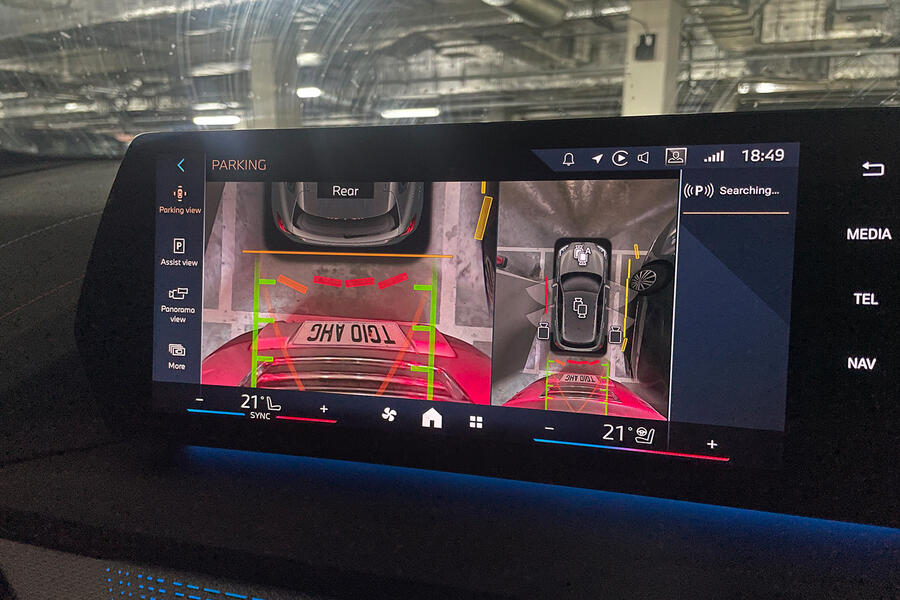
But anyway, I gave BMW my name and email address and now I can share the wonders of central locking with my passengers. Such is life nowadays. The second compromise I’ve made concerns parking.
I was really struggling when trying to parallel or bay park slowly into a tight spot, because if the car came to a halt when in reverse, it would require a daft amount of accelerator pedal travel to bring the engine back to life.
So I go into yet another on-screen menu to deactivate the engine stop-start and auto hold functions, and suddenly parking has never been easier – not least because my car is equipped with a military-grade arsenal of parking aids (part of the £2750 Technology Plus Pack).
I would have been happy with audible sensors alone, but there’s also a camera suite that offers me top-down and panoramic views with coloured proximity indicators and even curved lines that change as I move the steering wheel – not to mention a system that will automatically drive the car into a bay or parallel space if I want it to.
I tried this and was impressed – although I did chicken out and hit the brakes before the car adjudged the manoeuvre to be complete. You can fall in love quickly, but it takes time to build trust, I guess.
Update 3
It’s almost amazing that I have written several reports on the same car and not felt the need to discuss the user interface.
So radically has design in this area changed that nowadays it’s frequently the main focus of a car review – often because physical controls have been ‘moved’ onto a touchscreen with consequences that we’ve found less than gratifying.
That just isn’t the case with the 1 Series, despite it too having succumbed to that trend in the transition between its third and fourth generations.
The lower row of buttons (for the audio) and the upper one (for the climate control) were both wiped clean, replaced by a strip of trendy ambient lights and more icons on the central touchscreen.
I would always rather have physical controls, but the 1 Series’ highly configurable digital instrument display has given me a decent substitute. It essentially replicates what you used to get in the Audi TT – still the best modern interior layout in my estimation.
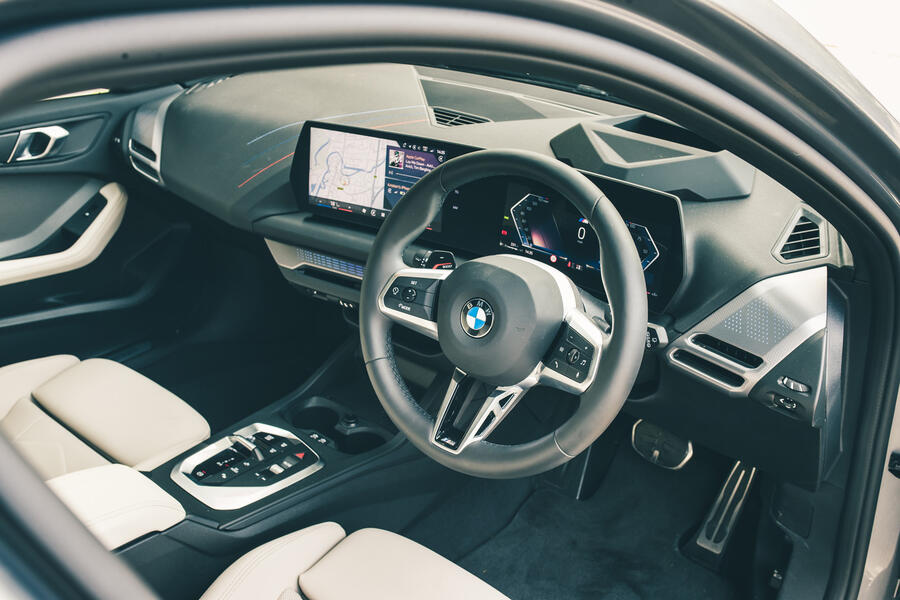
The speedometer and tachometer are rendered as C-shaped half dials and between them is my current audio feed, plus sat-nav instructions – or if I’m on unfamiliar roads, I can switch to see the sat-nav map. Best of all, this is integrated with Apple CarPlay, not forcing me to use the native BMW sat-nav.
Then I can have the climate control menu fill the entire touchscreen. I only wish the icons could be made larger and therefore easier to hit while I’m driving.
Despite the touchscreen measuring 10.7in, I have to be precise with my weaker, left hand to increase the fan speed or temperature, and all so I can see giant digital renderings of the two front seats and active vents.
And it’s even trickier to use the shortcuts at the top of the screen, if you should need them. Before finding this ideal configuration, I would often accidentally mute a podcast while trying to open up the sat-nav, which was pretty exasperating.
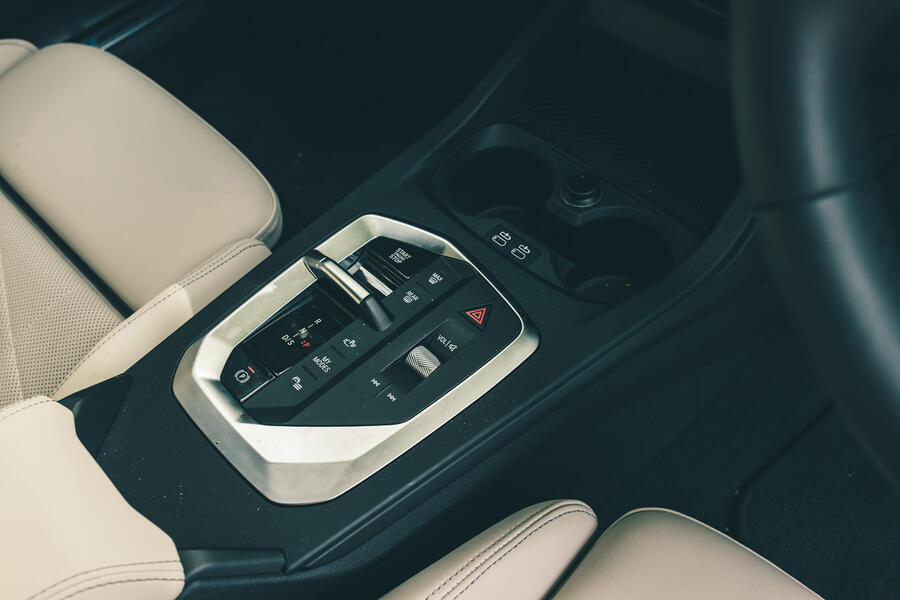
At least the preservation of physical audio controls on the steering wheel made it easy to restart the digital chatter. The infotainment software, BMW iDrive OS9, has mercifully been entirely glitch-free.
However, Apple CarPlay has randomly developed a curious habit, similar to that which Mark Tisshaw recently experienced in his Renault Scenic: after alerting me to a new text message, Siri turns mute when I ask him to read it aloud.
I’ve belatedly updated my iPhone to the latest iOS but still Siri’s silence persists. Sigh. I must also mention the paddle shifters.
Flicking them to change gear just doesn’t hit the same way as co-ordinating my left limbs for a perfect manual shift, and when I’ve forced myself to use them, I’ve got bored after only a few corners and rediverted my attention to nailing my cornering lines.
I just can’t see the point – and nor have I in previous automatic performance cars. Am I in the minority among enthusiasts here? Let me know.
Final update
I know it’s over, and it never really began – but in my heart, it was so real.
Yep, I’ve been as mopey as Morrissey since having to hand ‘my’ 120 back to BMW. What a fabulously practical and enjoyable little car it proved to be – and many of its attributes that I so valued have now been put into an even sharper perspective by the enormous plug-in hybrid SUV that has replaced it.
The entry-level 1 Series is a BMW that has never fully convinced us in its sub-M forms, and that didn’t change when Munich moved it into its fourth generation (F70).
“The 120 uses its new-found mild-hybrid tech quite well, but its digital cabin technology less so. The car’s pursuit of greater driver appeal is clear, but the delivery of it lacks coherence and true efficacy,” concluded my road tester colleagues.

Suffice to say the car left a more positive impression on me over the past few months. While I share those reservations about the interior (more on which later), I greatly enjoyed the strong performance – this from only three cylinders, remember – and the inherent dynamism of the chassis.
The 1 Series can’t match the handling talents of pricier BMW models, but for a front-driven family hatchback at a fairly affordable price, it’s right up there. If I had to choose between it and a comparable Mercedes-Benz A-Class, Audi A3 Sportback, Volkswagen Golf or Cupra Leon, I would stick rather than twist.
Performance really was remarkable for what might sound like a powerplant unbefitting of an M-badged BMW; I never found it wanting when trying to fly away from the lights or jump into a rare gap in M25 traffic.
Around town, the chassis’ inherent agility combined with the car’s compact dimensions to make it feel right at home. And out on country roads, I trusted it such that I could really relish attacking inviting corners.
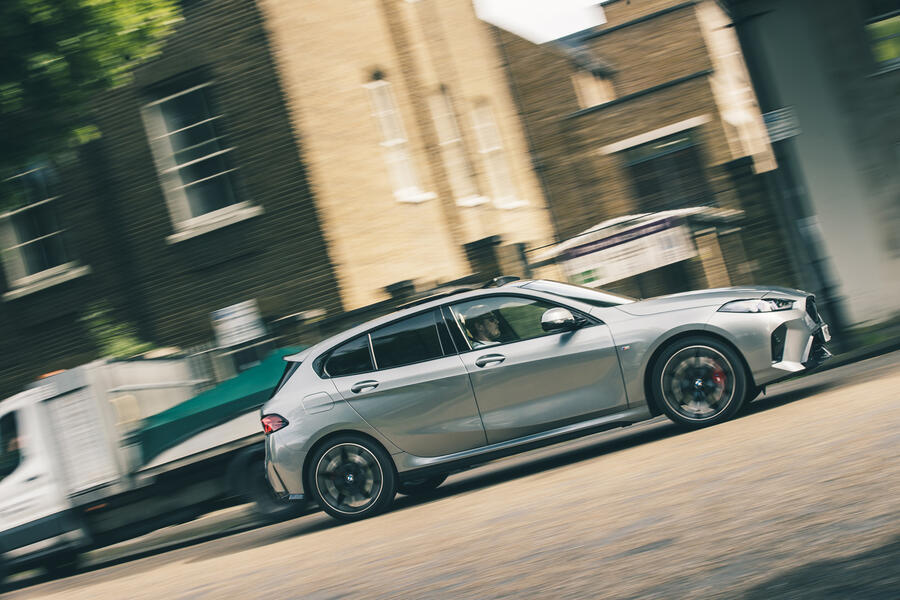
And all this while averaging an impressive 45.2mpg, thanks not least to its new mild-hybrid system. Such a high figure really makes an enormous difference when you have a long motorway commute – especially given there are no longer any diesel versions of the 1 Series offered in the UK.
My main criticism of the 120 is not the driver appeal but the ride quality. On its large wheels and low-profile rubber, my sportily specced car was always firm and frequently restless, even at a 70mph cruise.
To my dismay, Felix Page’s Cupra Leon had even thinner 19in tyres and was consequently even more uncomfortable, but two wrongs don’t make a right.
As I’ve previously written, you might be wise to add a load of sporty-looking options to BMW’s cheaper Sport trim and protect your posterior with 10cm more sidewall. On the subject of options, my car was fitted with a staggering £10,000 worth of them.
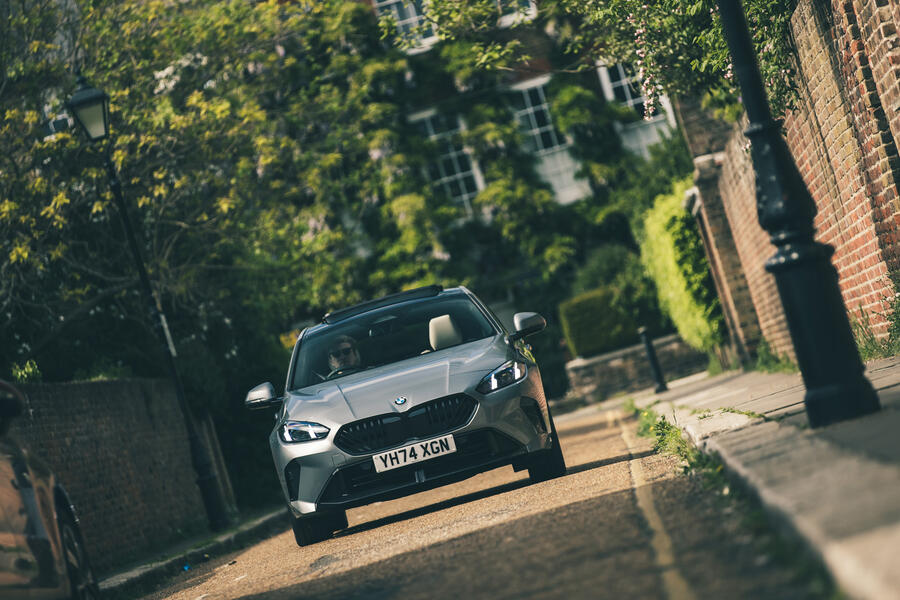
I certainly wouldn’t recommend anyone following suit, because this takes the 120 M Sport over the ‘luxury car tax’ threshold, but of them I would have missed the enhanced brakes (which possibly saved me from committing felicide), 40/20/40-split folding rear seats, sun protection glass, Harman Kardon stereo (excellent sound quality) and sunroof – and I did miss adjustable lower-back support (£415).
Like my colleagues, I feel obliged to criticise BMW’s decision to bin the rows of physical buttons on the dashboard, as a touchscreen is never a worthy substitute.
But I must temper this by saying that, thanks to the configurability of the digital instrument display (you can have your sat-nav and media displayed between the tacho and speedo), changing the climate is less fraught here than I have found it to be in other modern cars.
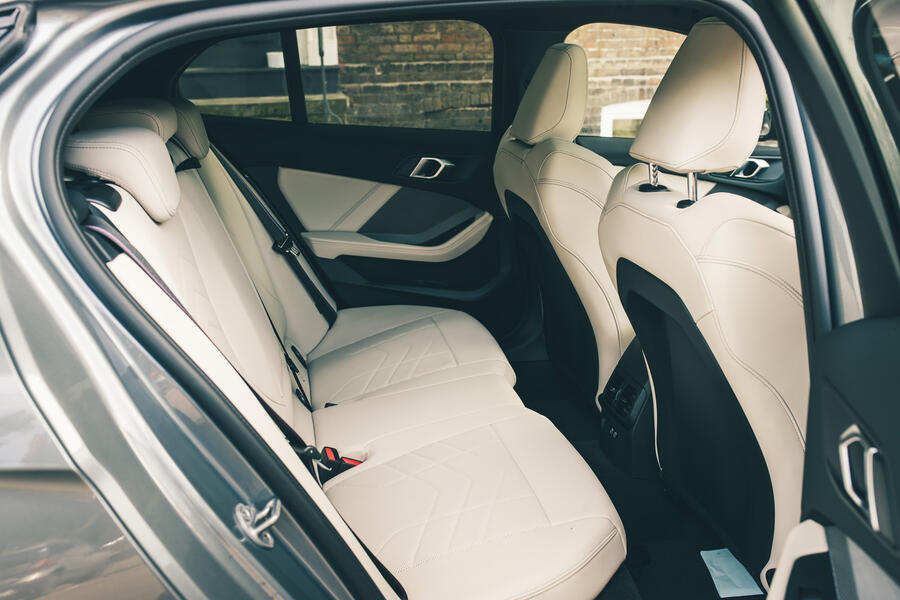
Everything else about the interior I liked a lot. Ergonomics aside, the dashboard design was very pleasing on the eye, with its dual-screen frame and ambient lighting strips, while the sports seats (comfortable, albeit lacking lumbar adjustability) looked fabulous wrapped in the cream faux leather – definitely the colour I would choose, as it gave the interior such a sense of lightness.
Even more so when I had the optional sunroof open – bearable up to about 40mph – on a sunny day. Many cars nowadays feel a bit like black and grey prison cells; this could hardly be more different.
Rear passengers agreed too, the switch to FWD having made the 1 Series much more practical in the back. I started this test by wondering whether this baby BMW might be one capable of pleasing everybody.
That suspicion has already been disproved. Perhaps things would be different among the wider public, but among Autocar staff at least, I’m of the minority view.
But that’s okay: it’s better to be loved by some than to spark passionate feelings in nobody at all – and there are many cars in that category these days.
BMW 120 M Sport specification
Prices: List price new £32,775 List price now £34,290 Price as tested £43,190
Options: Technology Plus Pack £2750, M Sport Package Pro £2075, panoramic glass sunroof £1050, electric front seats with driver memory £730, Skyscraper Grey metallic paint £650, Harman Kardon surround sound system £550, 19in ‘976’ M bi-colour alloy wheels £540, automatic air conditioning £480, electric bootlid £390, sun protection glass £320, black roof £315, Oysterperforated Veganza upholstery £215, heated steering wheel £175, split folding rear seats £175
Fuel consumption and range: Claimed economy 41.3mpg Fuel tank 49 litres Test average 45.2mpg Test best 45.6mpg Test worst 44.9mpg Real-world range 487 miles
Tech highlights: 0-62mph 7.8sec Top speed 140mph Engine 3 cyls in line, 1499cc, turbo, petrol Max power 154bhp at 47000-6500rpm Max torque 177lb ft at 1500-4400rpm Transmission 7-spd automatic, FWD Boot capacity380-1200 litres Wheels 8.0Jx19in, alloy Tyres 225/40 R19, Goodyear Eagle F1 Kerb weight 1500kg
Service and running costs: Contract hire rate £385pcm CO2 128g/km Service costs None Other costs None Fuel costs £470.06 Running costs inc fuel £470.06 Cost per mile 13 pence Faults None
Chrysler CEO Teases Return of Traditional Cars Over Minivans and Crossovers
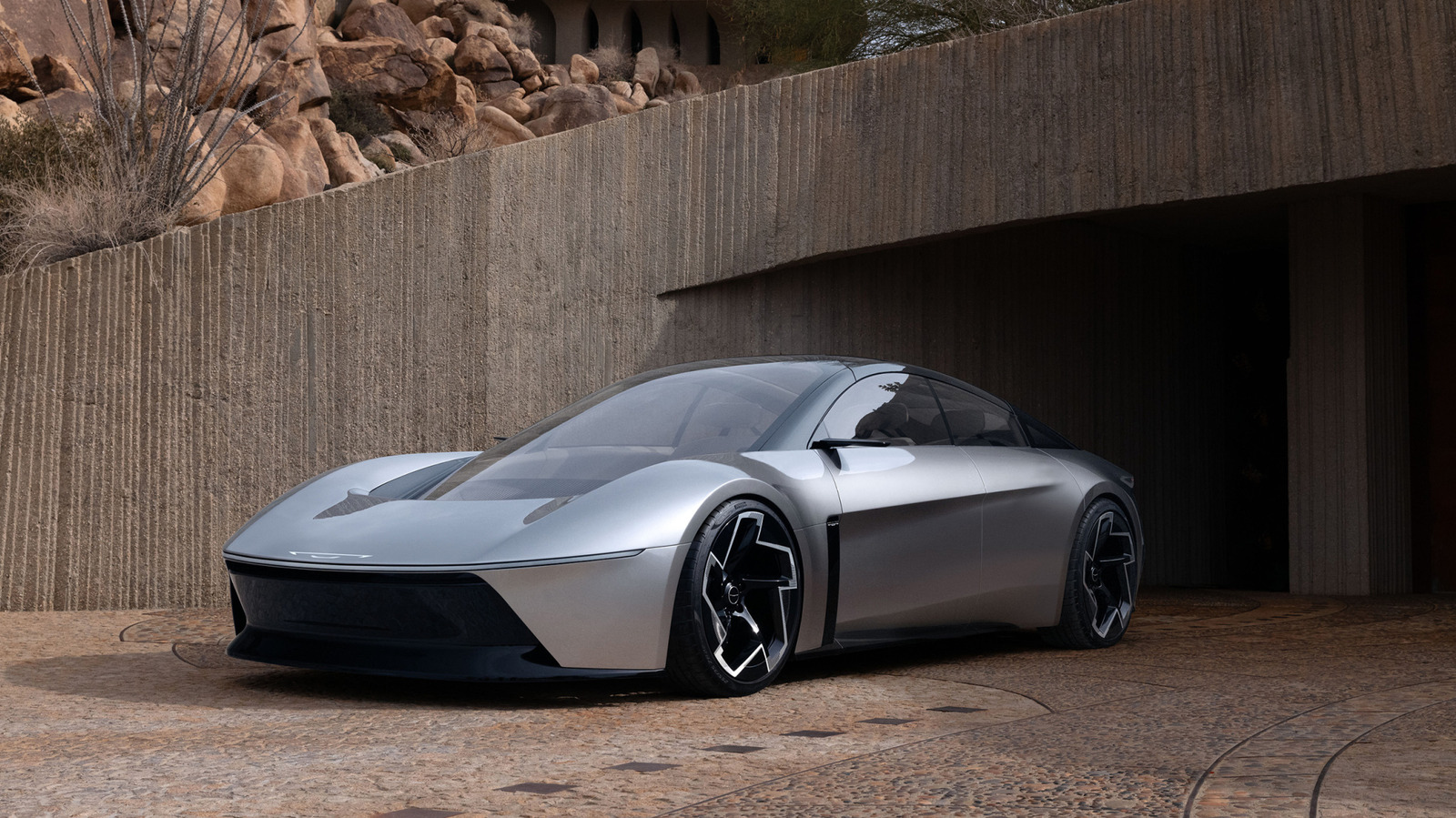
Lightning McQueen Inspires a New Generation of Car Enthusiasts
 Has Lightning McQueen turned a new generation onto cars?
Has Lightning McQueen turned a new generation onto cars?
Cars was the first film we took my younger brother to see in the cinema, and he loved it so much that we had to go back and watch it another three times. So I suppose I have him to thank for my Lightning McQueen mega-fan status.
In case you’re unfamiliar, this Golden Globe-winning 2006 Pixar film tells the story of an arrogant, anthropomorphic Nascar-esque oval racer who’s in with a shout of winning the prestigious ‘Piston Cup’ in his rookie season.
After an unlikely three-way tie for the title in the final race, the series organisers hastily arrange a decider the following week on the other side of the country, and hero McQueen duly sets off in his truck, Mack, to head to the fictional Los Angeles International Motor Speedway.
During the night, Lightning is separated from Mack after he rolls out of the back of the truck, leaving him stranded on the famous Route 66, and while frantically trying to find his way back to the interstate, inadvertently rips up the high street of a backwater town called Radiator Springs.
Forced to stay until he repairs it, he begrudgingly gets to work, keen to make it to Los Angeles in time for the race. During his quasi-confinement, he meets Doc Hudson, the cantankerous town mayor who turns out to be legendary three-time Piston Cup winner Hudson Hornet. After a fractious start, Doc becomes McQueen’s mentor - and later his crew chief at the tiebreaker race, where McQueen nobly sacrifices a guaranteed win to attend to one of his rivals after a crash - his short small-town sojourn having taught him the values of empathy and kindness.
Sorry for the spoilers, but you really should have watched it by now.
The notion of a stuck-up "cooler-than-everyone-else" athlete type – complete with obnoxious “Kachow” catchphrase – being humbled by a tight-knit community of misfits, and learning how they thrive by relying on each other is just so wholesome. It leaves my heart full every time I watch it.
Let’s not forget the phenomenal soundtrack either, which features hits such as Life is a Highway by Rascal Flatts (a fantastic karaoke choice), the iconic Route 66 by John Mayer and the mood-boosting opener, Real Gone performed by Sheryl Crow. Truly one of the best movie scores out there, and you bet it was a mainstay of my iPod Nano playlist.
Everything about the film holds real nostalgic value for me, and watching it brings back happy memories of the mini Radiator Springs my dad made for my brother one Christmas. It contained die-cast models of all the Radiator Springs sitting next to their respective businesses. Luigi the Fiat 500 was manning his tyre shop alongside Guido the forklift, Sarge the Willys Jeep proudly guarded his army surplus store, and of course Sally the 996-generation Porsche 911 was waiting to welcome guests to her traffic cone-themed motel.
Probably the main reason that I love this Disney classic, though, is that it reminds me of the good old days when I didn't have adult responsibilities and all I had to worry about was beating my brother's high score on the accompanying Playstation 2 videogame (an oft-overlooked gem). But I owe its creators a debt of gratitude for instilling in me at an early age the notion that cars can have personalities and fantastic stories to tell - even if they don’t have eyes and tongues in real life. Oh, and true to form, Cars 2 is definitely nowhere near as good as the first one, and I will die on that hill.
Lunar Terrain Vehicle Enables Real Time Remote Driving on the Moon
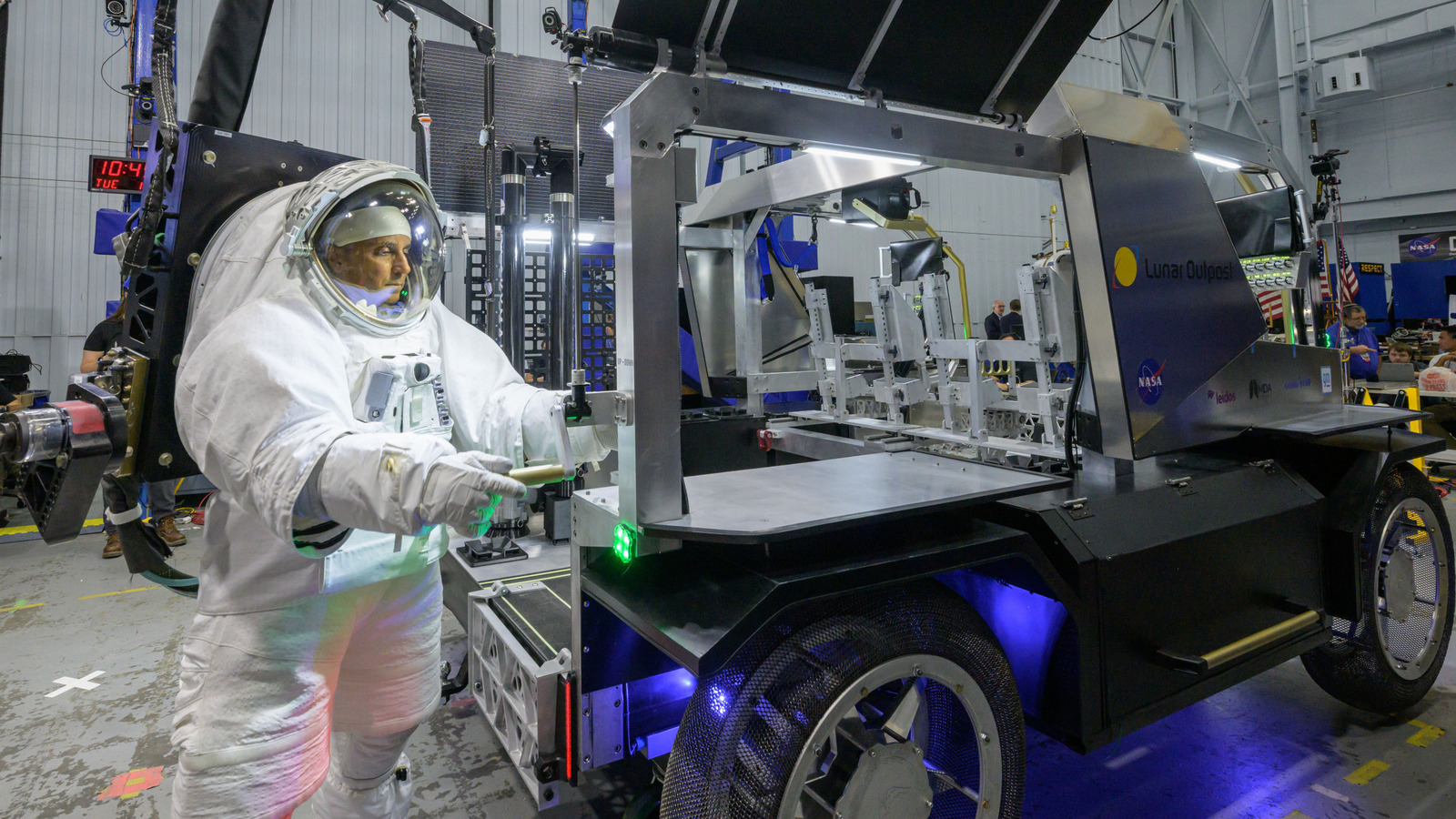
Airplane Crash Shocks Kentucky Homeowner but Everyone Safe




